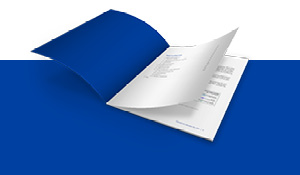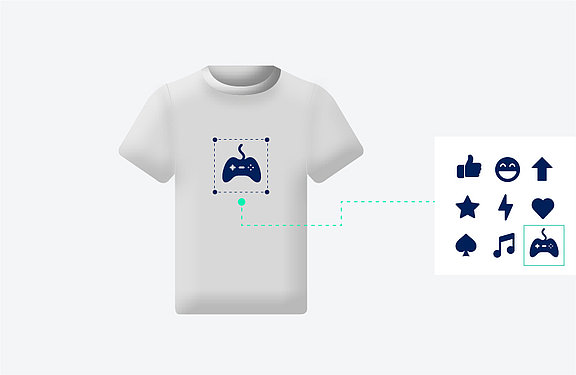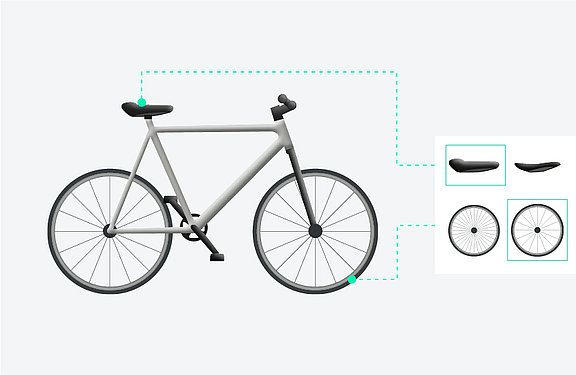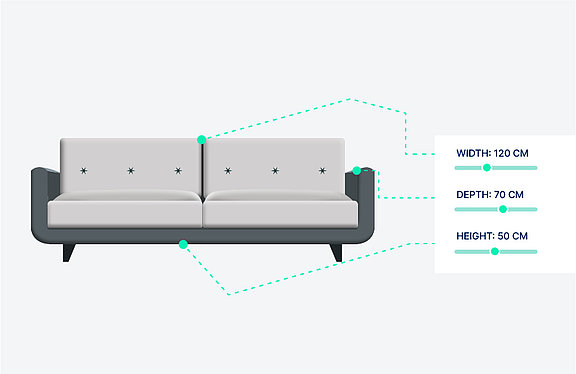How do product configurators differ from each other?
Configurators enable consumers to individualize and customize their desired product. But not every type of customization is treated equally in the implementation. Essentially, a distinction can be made between cosmetic, functional and parametric configuration. These three different possibilities have their own requirements for the configurator, visualization and production of the end product.
3 configurator options at a glance
Cosmetical configuration
Here, the customization of the product happens only when the actual product has already been produced. This can happen, for example, through printing, embroidery or painting, the most frequent use is with t-shirt configurators: the product itself (the shirt) is already produced and is only later customized through printing. The advantage of this is that t-shirts can be pre-produced in large quantities - only afterwards they are printed with motifs and texts. The integration of the customization takes place at the very end, which makes the entire process uncomplicated and simple.
Examples of cosmetical configurators: baby bib with name imprint, t-shirt with motif embroidery…

Configurator checklist
Avoid stumbling blocks.

Functional configuration
The functional configuration, on the other hand, is slightly more demanding. Here, no final production is possible in advance. Consumers can put together parts and components as they wish. An example of this is car configurators: By individually selecting the engine, transmission, interior equipment, and additional functions, the product can only be assembled when the data from the configurator is available.
Examples of functional configurators: modular shelving system, bicycles, motorcycles, ...

Parametrical configuration
The most complex proves to be the parametrical configuration. Parametrical in this context means that dimensions can be freely defined. For example, the length and width of a tabletop can be defined as desired. The product changes in real time. Both the visualization and the production process are the most demanding with this configurator. However, the advantage of this is that consumers receive a product that perfectly meets their requirements, which can mean an enormous competitive advantage.a
Examples of parametric configurators: customized shirts, front doors, garden sheds, ...

Which option is suitable for me?
Whether the cosmetical, functional or parametrical configuration is suitable for you depends largely on the product conditions and the desired result. No valid rule can be derived for this. Theoretically, it is possible to combine all three levels in a single configurator. It is best to consult an expert when making your selection. Contact us now!
How do the configurators differ in terms of price?
Basically, cosmetical configuration is the cheapest option in programming. The most expensive are parametrical product configurators. Here, for example, the length, width and height of a garden shed can be freely defined. This requires complex product logic in the background, which is much more expensive to program. It would be dubious to quote a flat price, as the purchase of a configurator is similar to the purchase of a car. Every car drives from A to B and fulfills the purpose. The price is therefore determined by the car model. A small car is much cheaper than a limousine. This principle can also be applied to the price of a configurator.
Does Combeenation offer all three options?
Yes, configurators from Combeenation can of course implement all three options. Thanks to the leading Free-Flow technology, even the mapping of complex products is possible. Combeenation configurators convince with a complex set of rules that lies in the Case Studies.
This might also interest you:

Configurator checklist
Avoid stumbling blocks.
